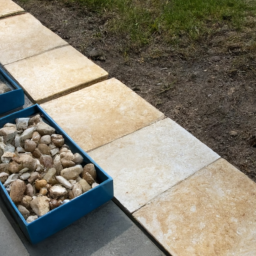How to Lay Landscaping Stones
How To Lay Landscaping Stones
How To Lay Landscaping Stones
For those seeking an elegant and attractive look for their outdoor spaces, landscaping stones provide a modern touch that will transform the space into a private oasis. Many homeowners opt to lay their own landscaping stonesa project that, with proper preparation, is easier than it looks. This article examines eight pivotal themes for successful landscaping stone installation. We explore the history of landscaping stones, the necessary supplies and tools, essential steps in the installation process, landscape gardening design tips, maintenance tips for longevity, the benefits of using landscaping stones, and potential pitfalls to look out for when selecting stones.
History of Landscaping Stones
For centuries, landscaping stones have been used to transform outdoor spaces. This liberal use of stones has produced historically grand gardens such as the Jardin des Tuileries in Paris, or the Vatican City which features centuries-old travertine stone cobbles. Also, creating pathways with landscaping stones is an age-old practice. Famous stone pathways include the Magdalen College walkways in Oxford and the cobblestone streets in New York City. Even today, stone is still the best material to use for giving a garden a classic and timeless look.
Supplies and Tools
Before beginning your landscaping stone project, it is important to make sure you have all the necessary supplies and tools. Your list may include landscape fabric, crushed stone, stakes, gloves, a trowel, string or plastic lines, shovels, a level, spacers, and, of course, the landscaping stones. Some gravel may also be necessary. Depending on the design, other tools such as a pick axe may also be required.
Installation Process
The first step is to prepare the area for installation. This includes removing the top layer of soil as well as any weeds growing in the area. Next, a layer of landscape fabric and crushed stone should be added to the designated space. Use stakes and lines to mark the design specifications, and carefully level the area. The next step is to add the gravel, which should be packed down firmly. Finally, the landscaping stones can be added with a trowel and, if desired, spacers can be used to ensure consistent gaps between the stones.
Landscape Gardening Design Tips
When planning the landscaping stone layout, consider the existing architecture of the building as well as the coherence of shapes, colors, and sizes of the stones. Additionally, the stones should be arranged to create curved or wavy patterns and should correspond to existing plants or trees in the garden.
Maintenance Tips for Longevity
To ensure a long life for the landscaping stones, proper maintenance steps should be taken. Weed growth can be prevented by using weed-killer and a landscape fabric. To protect the stones from shifting, it is important to regularly check the level of the stones and restore it when needed. Common maintenance tips include brushing the stones regularly, and inspection for any damage.
Benefits of Using Landscaping Stones
With a well-installed landscaping stone project, the benefits are manifold. From paving the way for a beautiful and timeless outdoor space to improving the overall property value, landscaping stones also offer the following advantages: improved safety, higher durability, an aerosol of moistness, control over temperature, better protection from soil erosion, more natural features, and better drainage of water runoff.
Potential Pitfalls to Look Out for
A common mistake made while installing landscaping stones is to not follow a set of design specifications. The stones should be chosen and laid out intentionally to create a certain effect, and not just placed randomly. Additionally, it is important to choose the stones carefully as some varieties are naturally porous and thus more susceptible to water damage. Another mistake is to not measure properly before purchase; it is essential to know the exact dimensions of the space to be filled before buying the landscaping stones to avoid shortages or overages.
Insights
For those planning on laying their own landscaping stones, it is important to be well-equipped with pertinent knowledge. With the essential information provided in the themes of this article, one can properly prepare for and enjoy a successful installation process that will result in a beautiful and timeless outdoor space.

Previous Page
Next Page
